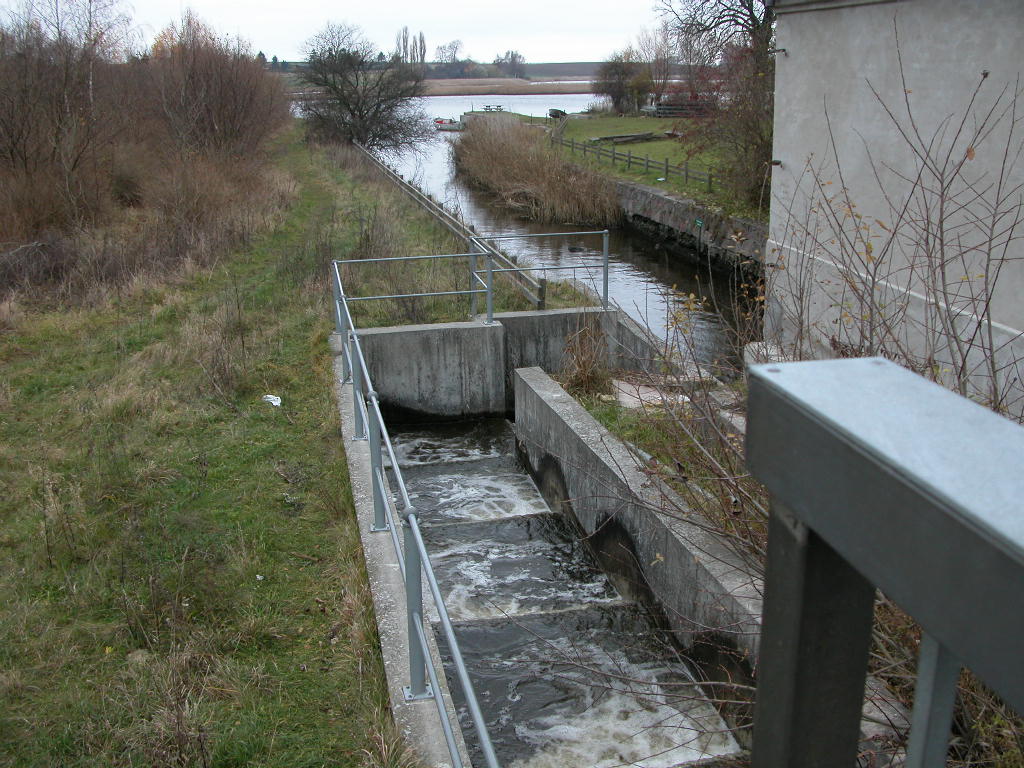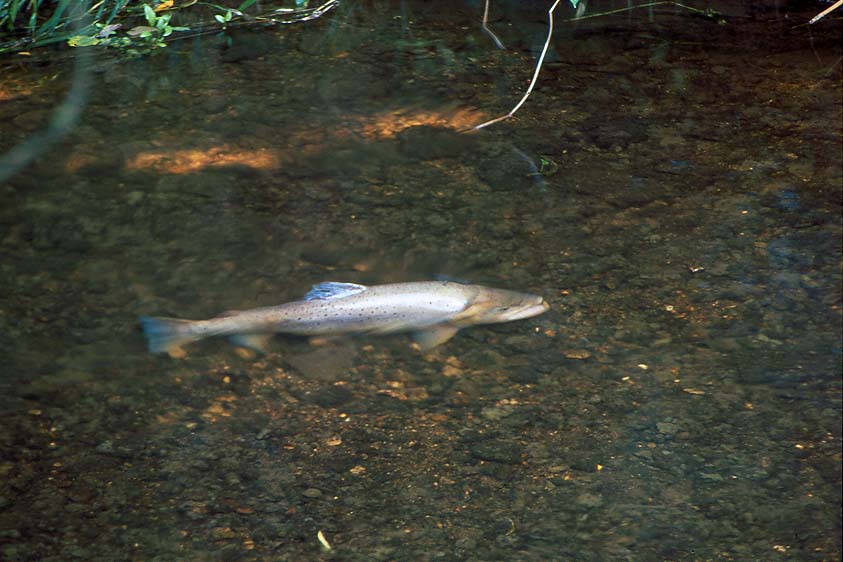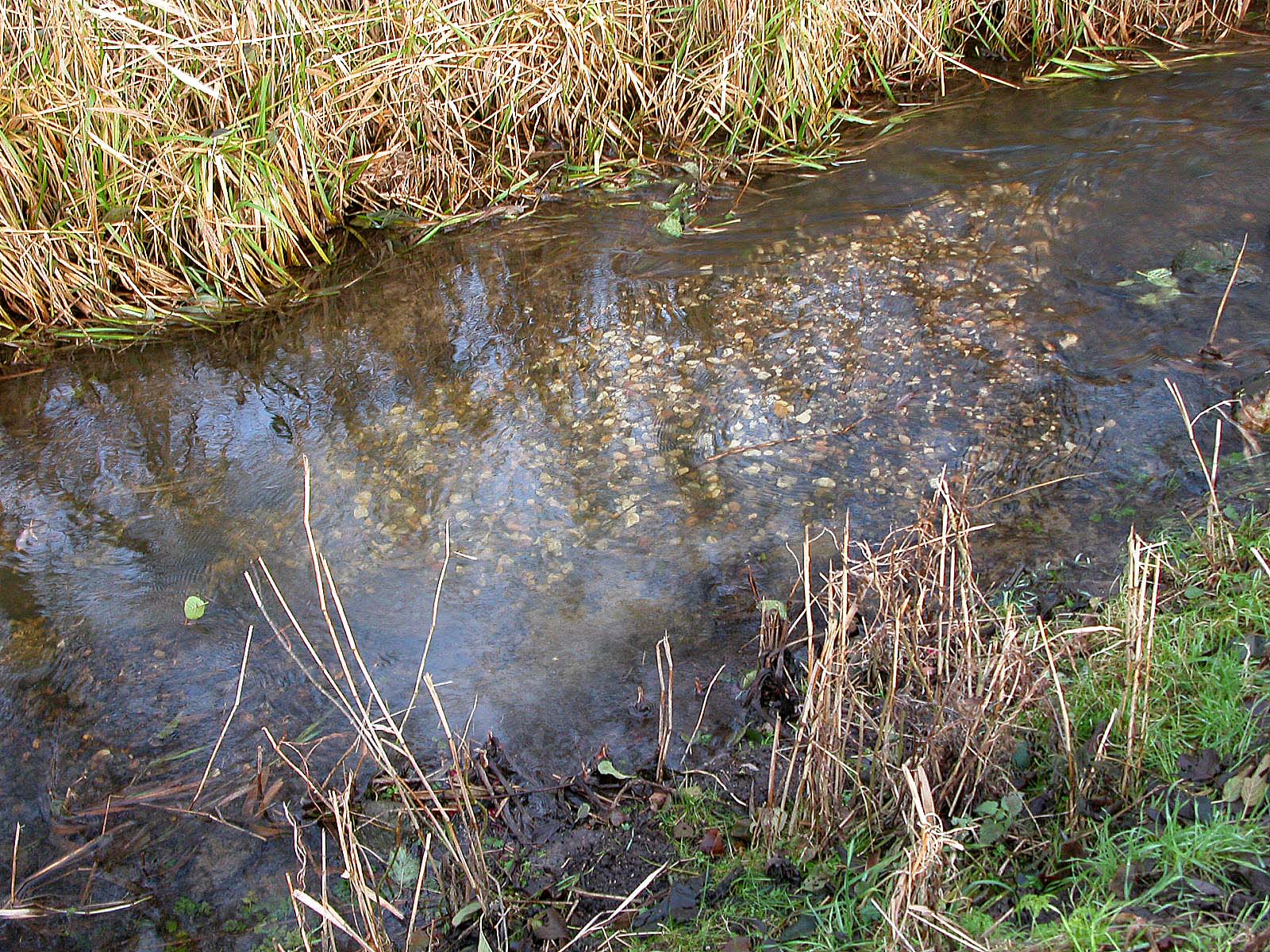Sea Trout
(Salmo trutta).The sea trout has become more common in the fjord in recent years. This is due largely to a determined release programme, and to the greater purity of water in the fjord and in streams. Trout fry are released in the streams that flow into the fjord. Many of them stay in the streams as brown trout, which are the same species as sea trout, but some of them venture out into the fjord, where they become sea trout. Most of the fish released are caught by pike, herons or cormorants when they have to pass through the large lakes between Kornerup and Kattinge Værk.
Helligrenden, which flows into the bottom of Borrevejle Vig, is one of the classic spawning sites for sea trout. There is now a self-sustaining population there. Since Roskilde County built a trout ladder beside the turbine house at Kattinge Værk, and laid out spawning beds, a large number of trout go up the Kornerup stream system to spawn there.
 The trout ladder at Kattinge Værk.
The trout ladder at Kattinge Værk.

Trout in Kornerup Stream.
The trout ladder is an interesting example of habitat restoration. When, in the 14th century, the Hvide family cut Kattinge Lake off from the fjord with a dam, the sea trout were no longer able to go up into Kornerup Stream. But 700 years later, when Roskilde County built the ladder in 1990, the trout started once again to go up to spawn. Late in the year you can see their spawning sites in several places. There are light patches on the bed of the stream, where the trout have made their redds.
 Spawning site. The light coloured stones are stirred up during the trout’s mating ritual.
Spawning site. The light coloured stones are stirred up during the trout’s mating ritual.
Sea trout, which can weigh up to 10kg, are caught using either rods or salmon nets. The latter method in particular can give excellent catches.
